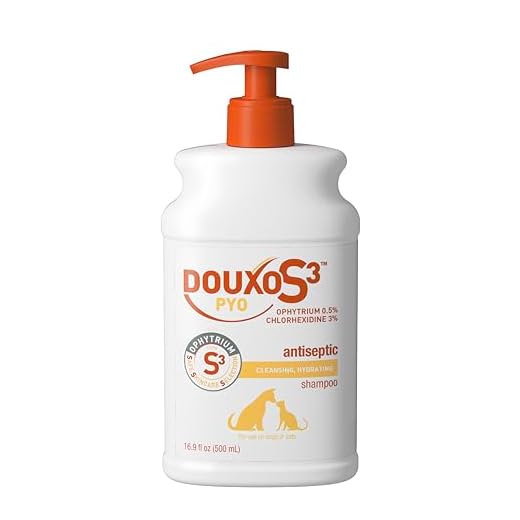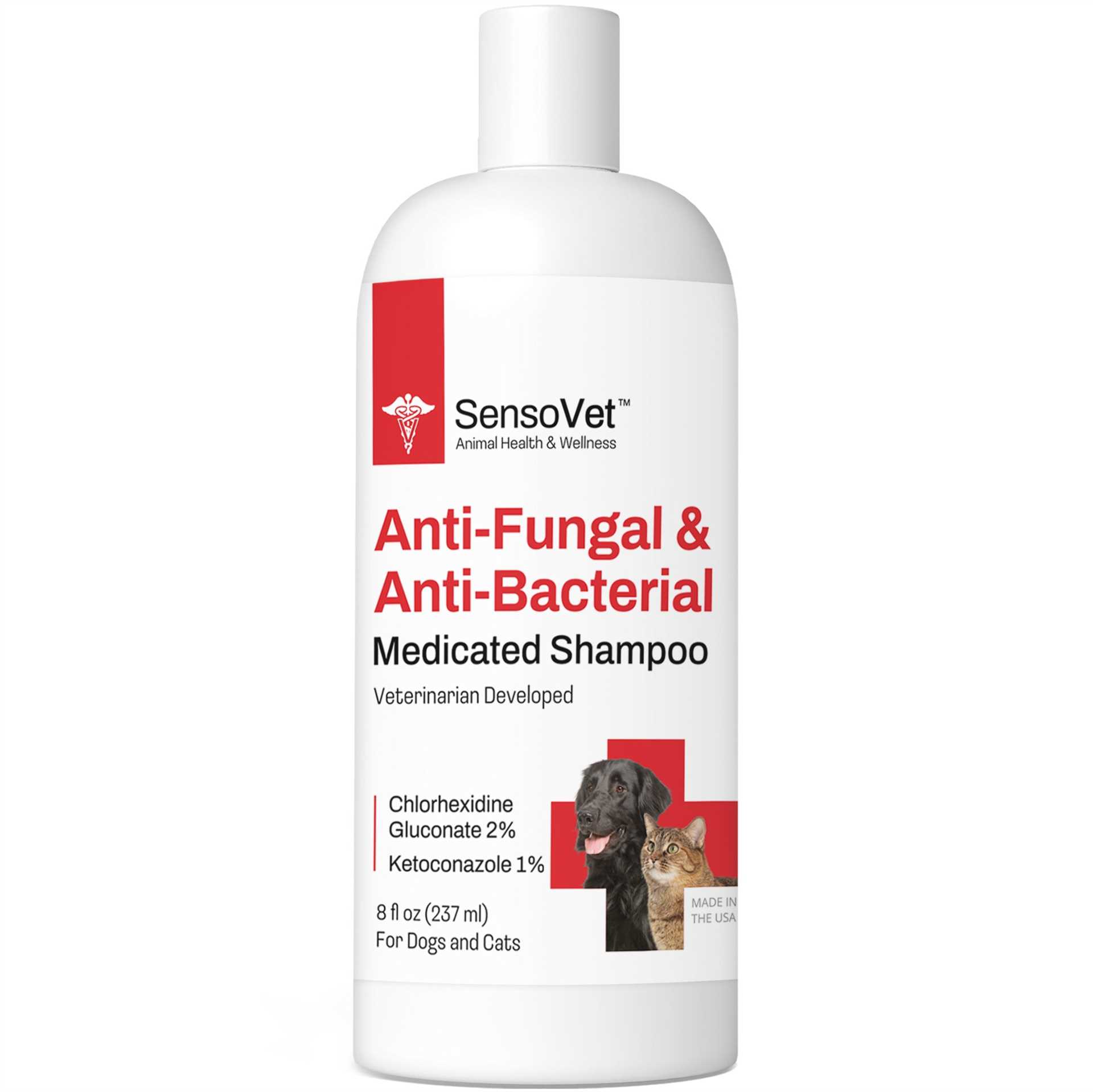


When dealing with fungal infections in your feline friend, selecting the right cleansing product is paramount. This article presents a selection of highly regarded solutions that can effectively address these issues in your pet’s coat. Each option is evaluated based on its ingredients, safety, and overall performance.
This guide is particularly useful for cat owners who are noticing signs of fungal growth, such as itching, skin irritation, or unusual odors. It provides detailed insights into various treatments available on the market, ensuring you can make an informed choice for your pet’s needs.
You will find reviews of several formulations, including their active components, how they work, and tips on application. Additionally, we discuss factors to consider before choosing a product, including your cat’s health status and any potential allergies. This information aims to assist you in maintaining your pet’s hygiene and comfort effectively.
Best Antifungal Shampoo for Cats
Selecting an effective cleansing product for feline companions facing fungal issues is paramount. Look for formulations containing ingredients like chlorhexidine or ketoconazole, known for their antifungal properties. These components help eliminate infections and soothe irritated skin.
Ensure the product is specifically designed for pets. Human shampoos often contain harsh chemicals that can harm cats. Always consult with a veterinarian prior to choosing a bathing solution to confirm it’s suitable for your pet’s condition.
Key Ingredients to Consider
- Chlorhexidine: Acts as a disinfectant and helps reduce fungal presence.
- Ketoconazole: A common antifungal agent that targets specific infections.
- Tea Tree Oil: Offers natural antifungal benefits, but ensure it’s diluted and safe for cats.
When applying the cleansing solution, follow these steps:
- Wet the cat’s fur thoroughly.
- Apply a small amount of the product, avoiding eyes and mouth.
- Massage it into the coat, focusing on affected areas.
- Rinse thoroughly until all product is removed.
- Dry the cat gently with a towel.
Monitor your cat’s reaction to the product. If any irritation occurs, discontinue use immediately and consult your veterinarian. Regular bathing can assist in managing and preventing future fungal issues.
Understanding Fungal Infections in Cats
Fungal infections in felines can lead to various health issues, often manifesting through skin irritations and other symptoms. Commonly, these infections may be caused by organisms such as Microsporum canis or Malassezia, which thrive in warm, damp environments.
Identifying the signs of a fungal invasion is crucial for timely treatment. Symptoms may include hair loss, redness, itching, and flaky skin. In some cases, affected areas may develop a foul odor or show signs of inflammation. If these symptoms appear, seeking veterinary advice is recommended for a proper diagnosis and treatment plan.
Symptoms and Diagnosis
- Hair loss in patches
- Red or inflamed skin
- Excessive scratching or grooming
- Foul smell from the skin
- Flaky or scaly skin
The diagnosis typically involves a physical examination and may include skin scrapings or fungal cultures. Treatment options can vary based on the type of fungus and severity of the infection.
Prevention and Care
Maintaining a clean environment is critical in preventing fungal infestations. Regular grooming and bathing, along with ensuring that your pet’s living area is dry and well-ventilated, can reduce the risk of infection. In cases of recurrent issues, your veterinarian might suggest specific products to help manage the condition.
Monitoring your feline friend for any changes in behavior or appearance can aid in early detection. Prompt veterinary care can help mitigate complications associated with fungal infections.
Key Ingredients to Look for in Cat Shampoos
Choosing a cleansing product for your feline companion involves careful consideration of its ingredients. Certain components play a significant role in ensuring both cleanliness and health of the fur and skin. Look for products that contain natural and safe substances known for their beneficial properties.
One of the most effective ingredients is ketoconazole, a compound recognized for its antifungal properties, which can help combat skin infections. Another noteworthy ingredient is chlorhexidine; this antibacterial agent is excellent for maintaining skin health and reducing irritation. Additionally, aloe vera is a soothing agent that provides moisture and relief to dry or irritated skin.
Additional Beneficial Components
- Tea Tree Oil: Known for its antiseptic qualities, it can assist in treating minor skin issues.
- Oatmeal: This ingredient is gentle and helps calm itchy skin while providing hydration.
- Vitamin E: An antioxidant that promotes skin health and helps in healing.
- Witch Hazel: A natural astringent that can reduce inflammation and soothe irritated areas.
Always check for potential allergens or harmful chemicals, such as sulfates and parabens, which can irritate sensitive skin. Opting for products with a pH balance suitable for felines will ensure that their skin remains healthy and comfortable. Consulting a veterinarian may also provide tailored recommendations based on your pet’s specific needs.
Recommended Antifungal Solutions for Feline Care
Choosing an effective cleansing product for your feline companion is crucial in combating fungal infections. Look for formulations that contain medicated ingredients known for their properties in eliminating fungal growth.
Many products are designed specifically for pets, ensuring safety and efficacy. These solutions typically incorporate natural ingredients that help soothe the skin while addressing the underlying issues. Always consult with a veterinarian prior to use to ensure suitability for your pet’s condition.
Key Ingredients to Look For
- Chlorhexidine: A powerful antiseptic that helps eliminate bacteria and fungi.
- Ketoconazole: Commonly used for its antifungal properties, effective against various fungal infections.
- Tea Tree Oil: Known for its natural antifungal and antibacterial benefits.
- Oatmeal: Soothes irritated skin while providing hydration.
When selecting a product, ensure it is formulated specifically for felines, as some ingredients safe for other animals may not be suitable for cats. Check for hypoallergenic options to prevent adverse reactions.
Regular usage as recommended can significantly improve your pet’s skin condition. Monitor your feline’s response to the treatment and consult with your veterinarian if any unusual symptoms arise.
Application Tips for Effective Treatment
Choose a high-quality cleansing product specifically formulated to combat fungal infections. Prior to application, ensure that your feline companion is calm and comfortable to minimize stress during the bathing process.
Wet the fur thoroughly with lukewarm water. Apply the product evenly, avoiding the eyes, nose, and mouth. Massage it into the coat for several minutes to allow the ingredients to penetrate the skin. Rinse thoroughly to remove all residues, as leftover product can irritate the skin.
Additional Recommendations
- Use this treatment regularly, as directed on the label or by your veterinarian, typically every 1-2 weeks until the issue is resolved.
- After bathing, dry your pet with a soft towel and keep them in a warm environment to prevent chills.
- Monitor your feline for any signs of irritation or allergic reactions, such as excessive scratching or redness.
- Consult with your veterinarian if symptoms persist or worsen even after several treatments.
- Maintain a clean living environment by regularly washing bedding and toys to prevent re-infection.
Following these guidelines can significantly contribute to the successful resolution of fungal issues in your pet. Consistent application and monitoring will facilitate a healthier coat and skin.
Best antifungal shampoo for cats
Features
| Part Number | 16MHTW |
| Model | 16MHTW |
| Color | cream |
| Size | New Version |
Features
| Part Number | SYL-110 |
| Model | SYL-110 |
| Warranty | Non applicable |
| Color | white |
| Size | 128 Fl Oz (Pack of 1) |
Features
| Part Number | D98420E |
| Model | D98420E |
| Color | Translucent |
| Size | 16.9 oz |
Video:
FAQ:
What is the best antifungal shampoo for cats?
The best antifungal shampoo for cats typically contains active ingredients such as chlorhexidine, ketoconazole, or miconazole. These ingredients are known for their antifungal properties and can help treat conditions like ringworm or yeast infections. Brands like Vet’s Best, Earthbath, and Douxo are often recommended by veterinarians for their effectiveness and gentle formulations. Always consult with your vet to determine the most suitable option for your cat’s specific condition.
How do I know if my cat needs antifungal shampoo?
Signs that your cat may need antifungal shampoo include excessive scratching, hair loss, red or inflamed skin, and the presence of scabs or lesions. If you notice any of these symptoms, it’s best to consult your veterinarian for a proper diagnosis. They can recommend whether antifungal treatment is necessary and which product would be most effective for your cat’s specific issue.
Can I use human antifungal shampoo on my cat?
No, it is not advisable to use human antifungal shampoo on cats. Cats have different skin pH levels and sensitivities compared to humans. Products designed for human use may contain ingredients that can be harmful or irritating to feline skin. Always use shampoos specifically formulated for cats to ensure safety and effectiveness. Consult your veterinarian for recommendations on suitable products.
How often should I bathe my cat with antifungal shampoo?
The frequency of bathing your cat with antifungal shampoo depends on the severity of the fungal infection and your veterinarian’s guidance. Generally, it is recommended to bathe the cat once a week until the condition improves. After that, you may reduce the frequency to once every few weeks as a preventive measure. Always follow your vet’s instructions for the best results.
Are there any side effects of using antifungal shampoo on cats?
While antifungal shampoos are generally safe for cats, some may experience mild side effects, such as skin irritation or an allergic reaction. Signs to watch for include increased redness, itching, or discomfort after application. If you notice any adverse reactions, discontinue use and consult your veterinarian. They may recommend an alternative product or additional treatment options.









